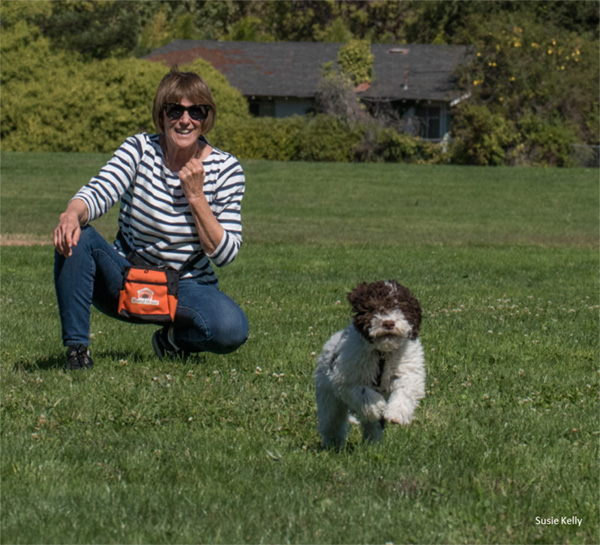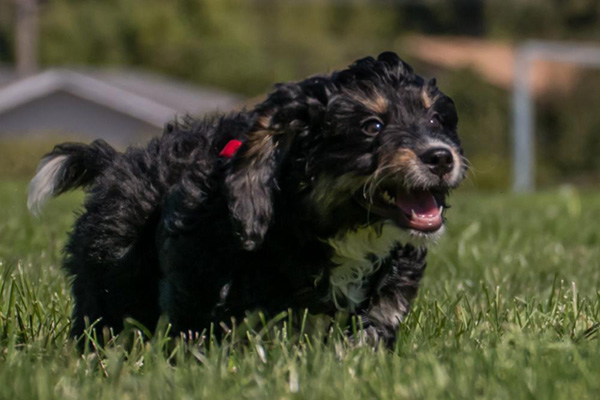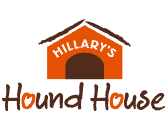
Why does my puppy jump on me, lunge at other dogs, chase the kids, ignore me, chew on furniture, bark nonstop? And what do I do?
Before we begin, it is important to keep a few things in mind:
- In puppies, we are dealing with a baby mind, one that is distractible, impetuous, lacks impulse control, has no social skills, and a strong sense of PLAY.
- Puppies are not stubborn and do not wish to defy anyone. Some may be curious, goal or scent driven, exceedingly brave, excitable, or momentarily fearful, uncertain, or shy. None exist to defy or manipulate. Their brains simply do not operate that way.
- Something else to know about puppies: Where a puppy looks, he is (in his imagination). In fact, if he’s fixated on something nearby, you no longer exist. Elvis has left the building.
Imagine taking your kids to Disneyland and asking them to do their homework. “But look!” they’ll cry plaintively, unable to take their eyes off the panoply of distractions that vie for their attention. It’s all simply irresistible.
What do Puppies Want?
Puppies (like toddlers) will jump, lunge, bark, chew, and chase because they are; excited, highly distractible, overstimulated, need to meet that dog or person, and/or want your attention!

Let’s take Jumping.
Many people try to turn away and ignore their puppy’s jumping. Unfortunately this does not work but rather implies tacit approval.
As goal directed adults we have all learned not to ignore the things in life that need to be changed. In fact, the things we ignore in life take on a life of their own. So do jumping, barking, chewing, lunging, and chasing.
Allowing = Approval to a Puppy.
Let’s face it, from your puppy’s point of view jumping, barking, chewing, lunging, and chasing is fun. In behavior-speak jumping is a self-reinforcing action and feedback loop. It’s fun, discharges energy, is it’s own reward. Plus, he gets your attention, suddenly you’re all over him to stop, and he gets a treat for sitting instead. That’s cool.
Win-Win. The Secret to Great Manners
In my experience, 99% of the puppies I have trained over the years understand me when I let them know it’s not OK to jump or bite or bark. I simply mean it, especially when they have scratched or hurt me. However, I also teach them immediately what to do to get what they want, and this is empowering. In fact, it’s a win-win and the secret to great manners.
Empower Your Puppy – Teach Him How to Get What He Wants
When we think of education the most powerful and productive lessons for a child (or a puppy) are teaching them what to do to get what they want. Why waste a lot of effort jumping and barking if all it takes is sitting and waiting? In the Jumpstart Program we start this training the first day. In a short time, even the most excitable puppies learn to wait longer with the understanding we will notice and reward them lavishly. Best of all, they get what they want.
I like the idea of teaching a puppy to sit to ask for what he wants; to go outside, go for a run, eat, play, get a toy? Even if you aren’t sure in the moment what your puppy wants, it’s easy to guess. Even if you get it wrong, it’s fun to guess and let him enjoy the process. Take him outside to potty, get out a toy, grab his leash, give him a bully stick. Enjoy the conversation. There are no wrong answers. What your puppy learns is that he can communicate with you, and you’ll do your level best to, “get it.”
What’s True for a Toddler is True for a Puppy
Years ago I had a friend whose young daughter would bite him when she got excited. She bit down hard and my friend was full of bruises on his arms and neck. What he did instead was teach her to hug him as hard as she could every time she wanted to bite. With encouragement she soon learned to recognize when the urge came up and change her behavior. The more consistent she got, the better handle she had on those primitive urges.
In humans, we call this sublimation and it’s not much different in puppies. In fact nothing erases an unwanted behavior faster than teaching a puppy he can get what he wants by doing something easy, like sitting. This is how puppies learn to do the right thing instead up erupting.
To Punish or Not to Punish?
I find that discipline has little effect on unwanted puppy behaviors. Training, on the other hand changes worlds.
Pitfalls of Punishment
Before we go on, it is important to remember we are dealing with a baby mind that is distractible, impetuous, lacks impulse control, has no social skills, and a strong sense of play. None of these things warrant discipline.
Other than potentially frightening a puppy or physically forcing him down momentarily punishment leaves a puppy no way to discharge the head of steam he launched a moment ago. You may push him down, startle, or try to distract him, but what does he do with the momentum and energy that fueled the lunge – or the barking? It’s still there and it needs an outlet. Teach him instead to stick that landing, hold his fire, and wait to get his just reward.
A Short Term Solution for Young/New Puppies – Time Out
Early in your puppy’s training, if he gets too over the top (overstimulated to the point of losing control over his behavior), try a time out.
Using a Time Out is better than physical restraint which will only make things worse because it adds fuel to the fire in the form of anger, fear, even intimidation.
Worst of all, restraint without training simply gives a puppy something tangible to resist – you. You’ll want to avoid any state of resistance as you educate, be it a toddler, giraffe, horse, whale, or dog. Resistance takes learning out of the equation. It is it’s own lesson and can only be counterproductive.
Time Out Instead of Punishment
A brief Time Out is not punishment, but rather quiet time to regroup and calm down. Time Out’s are especially helpful with large breed puppies. You can’t force an 80 lb dog to calm down, no matter how much force you exert. He has to do it on his own.
You can do a Time Out by simply putting your puppy in his pen with a bully stick and letting him cool off for a few minutes. You don’t need to leave the room. Just chill for a moment. Then let him out, do a potty break, take a short walk, do a little training, discharge that extra energy, and relax. These periods of intense or explosive blow-outs will diminish in time as your puppy develops more impulse control and maturity.
In upcoming posts I will show you ways to discharge your puppy’s excess energy while teaching him how to use himself more productively.


